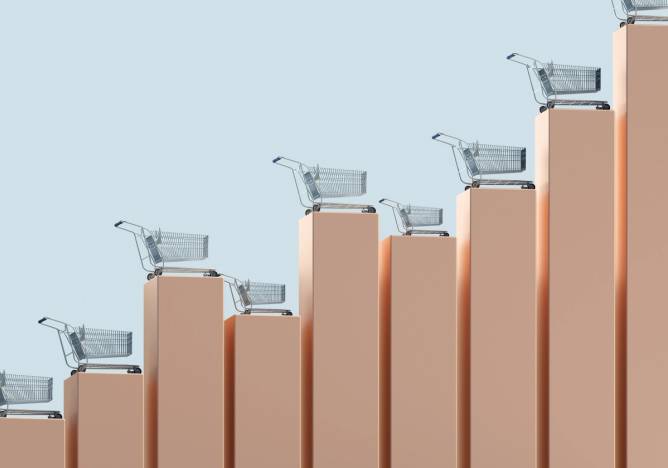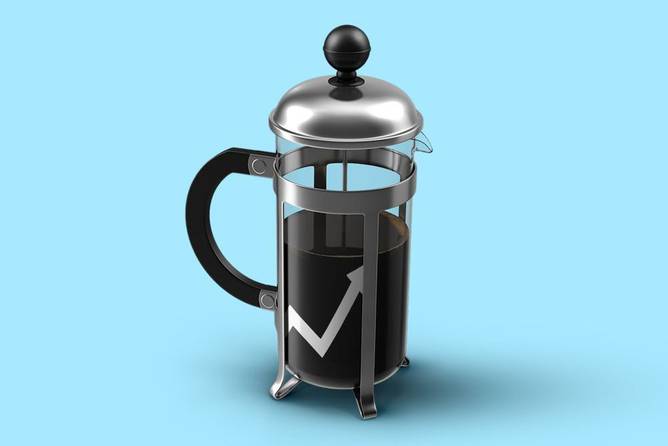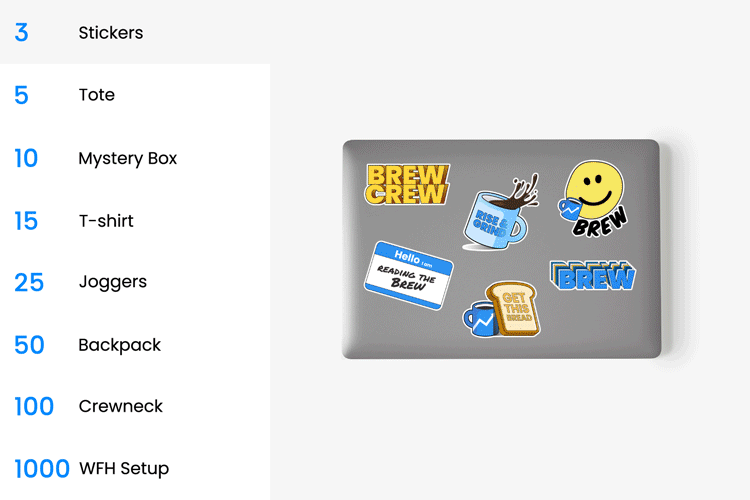It’s Wednesday. Imagine a world where you can level up your marketing game, have fun, and save money. That world is here: Morning Brew Learning is now offering an All Access pass with over 100 hours of business and marketing education that’s actually worth your time. The best part? If you purchase now, you get early access and save $200. Give yourself the gift of career advancement—buy now!
In today’s edition:
—Katie Hicks, Ryan Barwick, Alex Vuocolo
|
|
Fanta, JKR
Anyone who watched TV in the early 2000s probably remembers the commercial in which the Fantanas ask an essential question: “Wanta Fanta? Don’t you wanna?” Earlier this year, though, it seemed the answer among consumers was…not really.
“Fanta was one of the [Coca-Cola brands] that felt like it had gotten dusty and had been a bit forgotten about,” Lisa Smith, executive creative director at Jones Knowles Ritchie, told us.
That can be an indication that it’s time for a rebrand, so earlier this year, Smith and her team at JKR worked with Coca-Cola to bring Fanta into the 2020s, creating the brand’s first uniform identity that has now rolled out worldwide.
Soda, meet pop: Rapha Abreu, global VP of design at Coca-Cola, told Dezeen that the goal with Fanta’s rebrand, which followed a 2022 refresh of sister brand Sprite, was to make Fanta more playful while also reaching an older audience. With that aim in mind, Abreu turned to JKR, which he had previously worked with on the Burger King rebrand while he was at Restaurant Brands International, Smith said.
-
Right away, Smith noticed that the old brand identity had “two different looks and feels globally,” one for the US brand and another for other markets, as well as the use of an orange leaf in the logo, which could lead people to believe that all flavors had orange in them.
- “There were actually business imperatives around unifying and getting all the markets on the same page and then also overcoming that strong predominance of orange,” Smith said.
As a result, the orange leaf had to go. Another thing that demanded attention? The cut-out, construction paper–like typeface.
Keep reading here.—KH
|
|
Andriy Onufriyenko/Getty Images
Trim the trees—the holiday season is going to be extra merry for Madison Avenue, at least according to a new economic forecast.
The forecast, from industry analyst and former GroupM executive Brian Wieser, found that the digital advertising economy appears to be coasting along just fine: Ad revenue, excluding political spend, is expected to grow 5.9% in 2023, nearly 1% higher than the 5% Wieser previously predicted. Looking ahead, Wieser expects digital ad spend to grow about 5.2% in 2024, instead of his previous prediction of 4.3%.
Wieser’s previous forecast in September predicted a return to normalcy, far from the sugar high of the last decade, when digital ad spend surged. Several months later, “it feels better than normal,” he told Marketing Brew.
   : Ad revenue on digital platforms, like Google, Meta, and TikTok, grew about 14.6% in the third quarter of 2023 in Weiser’s estimation, beating his previous estimate of 12.3%, and he found that ad revenue on national TV was down by 3.2% in the quarter, instead of the 6.5% decline he predicted. Commerce media platforms, which includes retail giants like Amazon and Walmart as well as platforms like Expedia and TripAdvisor, saw ad revenues grow 22.8% in Q3, Weiser found. : Ad revenue on digital platforms, like Google, Meta, and TikTok, grew about 14.6% in the third quarter of 2023 in Weiser’s estimation, beating his previous estimate of 12.3%, and he found that ad revenue on national TV was down by 3.2% in the quarter, instead of the 6.5% decline he predicted. Commerce media platforms, which includes retail giants like Amazon and Walmart as well as platforms like Expedia and TripAdvisor, saw ad revenues grow 22.8% in Q3, Weiser found.
- There are a few things juicing the digital ad market, he wrote, including “cross-border spending (primarily from manufacturers based in China),” as well as increased spending from e-commerce companies “who are much more advertising-intense than traditional retailers and manufacturers,” and e-commerce platforms, which provide more places to run ads.
- Wieser told Marketing Brew that he expects e-commerce retailers to spend, on average, $4 for every dollar that a traditional retailer spends on advertising.
Read more here.—RB
|
|
Anadolu/Getty Images
The preference for online shopping on Black Friday is becoming the “new normal,” Deloitte Retail Research Leader Lupine Skelly told Retail Brew.
“It used to be really heavily in-store,” she said. “You kind of had to show up to get those doorbuster deals, and now it really has morphed into an omnichannel event.”
Early data from Adobe Analytics backs this up: Online spending on Black Friday jumped 7.5% year over year to $9.8 billion. This momentum carried over into the rest of the holiday weekend, with online sales rising 7.7% YoY.
- Those gains reflected behind-the-scenes effort, Adobe noted; companies had stepped up their game ahead of the sales weekend.
“An uncertain demand environment pushed retailers to deliver big discounts this season, while also fortifying their e-commerce services with flexible payment methods, better personalization, and enhanced mobile functionality,” Vivek Pandya, lead analyst for Adobe Digital Insights, said in a statement.
The research firm also found that buy now, pay later (BNPL) usage hit an all-time high on Cyber Monday of $940 million online, rising a “staggering” 42.5% year over year. It had already generated $7.3 billion between Nov. 1 and Nov. 26, up 14% YoY.
Keep reading on Retail Brew.—AV
|
|
|
You’ll like the sound of this. Audio advertising is one of the most effective marketing channels. So why is it so underrepped in media plans? Check out Audacy’s State of Audio 2023 report, a playbook packed with planning tips, creative how-tos, and innovative trends to help advertisers level up their audio possibilities. Take a look.
|
|
Morning Brew
There are a lot of bad marketing tips out there. These aren’t those.
C-suite: What is a chief digital officer—and should your brand have one?
Storybook: How to view, track, and make decisions based on Instagram Story metrics.
Measure up: Get up to speed on LinkedIn’s ad tool updates designed to improve campaign measurement.
Always be building: Resilient, successful brands have one thing in common—they invest in themselves, even in turbulent times. Hear brand-strengthening tips from 450 CMOs in Frontify’s new report. Download it here.* *A message from our sponsor.
|
|
Stat: 15 minutes. That’s the video length that TikTok began testing last month, up from the 10-minute limit it previously introduced in 2022, the Information reported.
Quote: “Attention is the new oil well of money-making, so companies are creating more and more attention mediums.”—ad-industry veteran Tim Armstrong to the Wall Street Journal, explaining why seemingly everything is now an advertising network
Read: “Everybody knows Flo from Progressive. Who is Stephanie Courtney?” (the New York Times)
|
|
ADVERTISE
//
CAREERS
//
SHOP
//
FAQ
Update your email preferences or unsubscribe
here.
View our privacy policy
here.
Copyright ©
2023
Morning Brew. All rights reserved.
22 W 19th St, 4th Floor, New York, NY 10011
|
|









